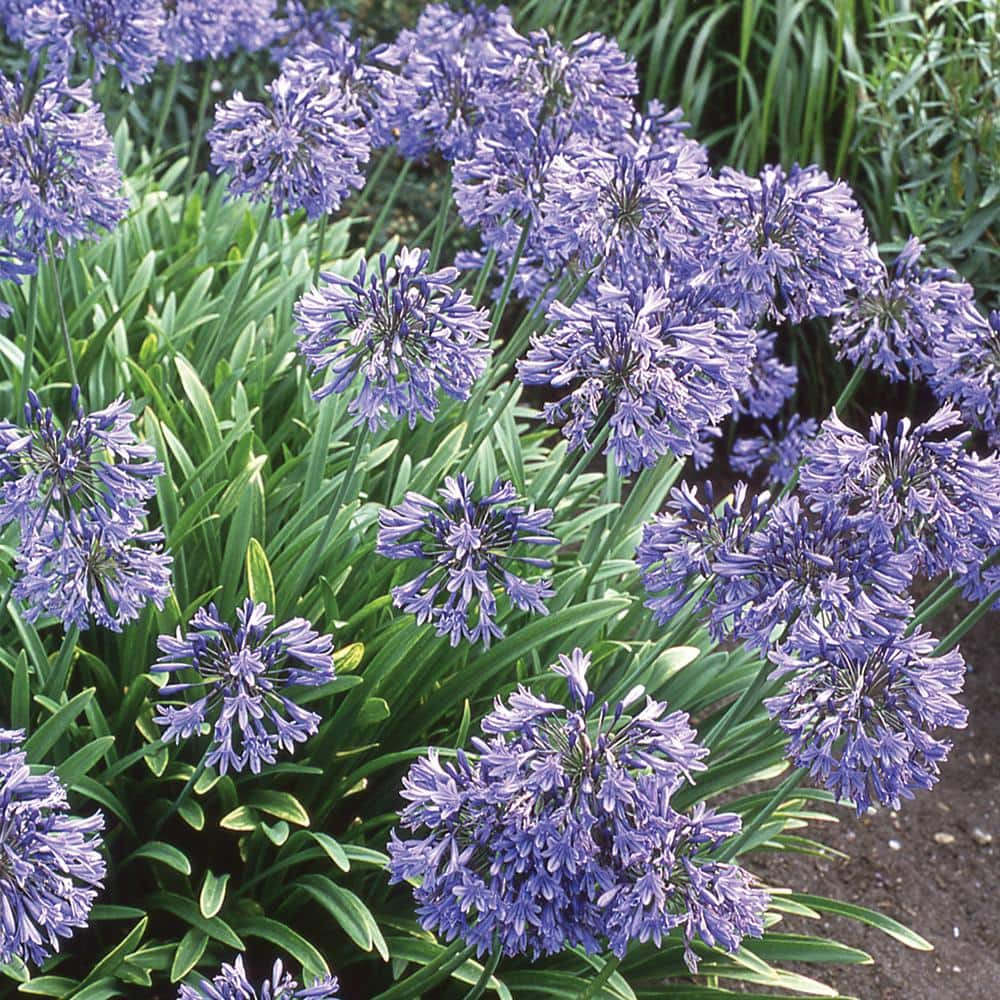Expanding Agapanthus: A Full Overview to Beautiful Blooms
Expanding Agapanthus: A Full Overview to Beautiful Blooms
Blog Article
Grasping the Art of Agapanthus Care: Important Steps for Healthy And Balanced Growth and Dynamic Flowers
In the world of horticulture, the cultivation of agapanthus stands as a satisfying venture for those that seek to support these elegant flowering plants. From selecting the ideal range to grasping pruning strategies, the journey in the direction of growing growing agapanthus plants is complex and holds the crucial to unlocking the full capacity of these botanical treasures.

Selecting the Right Agapanthus Variety

When picking the right Agapanthus variety for your yard, take into consideration variables such as climate viability, blossom shade, and growth routine. Additionally, consider the climate in your area to guarantee the Agapanthus selection you select can flourish in your details conditions. Comprehending the growth practice of various Agapanthus selections is important for appropriate positioning within your garden.
Perfect Planting Problems
Thinking about the optimal environmental needs is crucial for effective Agapanthus growing. Agapanthus prospers in well-draining soil with a slightly acidic to neutral pH degree. When planting, choose a place that receives complete sunlight to partial color. In hotter environments, offering some afternoon color can prevent scorching of the fallen leaves. Agapanthus plants are sensitive to cold temperatures and ought to be secured from frost throughout cold weather.
To make certain healthy development and vibrant blooms, plant Agapanthus light bulbs at a deepness of regarding 2-4 inches and area them 8-12 inches apart. Adding raw material, such as garden compost, to the dirt can enhance drain and fertility, promoting robust origin growth. Mulching around the base of the plants aids preserve dampness and reduces weed development. Regular watering is critical, specifically during the expanding period, to keep the soil continually wet however not saturated.
Watering and Fertilizing Tips
Preserving appropriate dampness degrees and offering crucial nutrients are crucial elements in the treatment routine for Agapanthus plants. When it concerns watering Agapanthus, it is vital to strike a balance. These plants like continually damp dirt yet are vulnerable to root rot if overwatered. Throughout the growing period, water deeply once a week, guaranteeing the soil is well-draining to avoid waterlogging. In hotter environments or during durations of drought, more frequent watering might be necessary to maintain the dirt evenly visite site moist. Nevertheless, minimize watering in the winter months to avoid water logged problems.
Fertilizing Agapanthus is vital for promoting healthy and balanced development and prolific blooms. Apply a well balanced fertilizer, such as a 10-10-10 formula, in the very early spring as new development emerges. By complying with these watering and fertilizing suggestions, you can guarantee your Agapanthus plants grow and produce vivid, resilient flowers.
Trimming Methods for Agapanthus
Trimming Agapanthus plants at the suitable times and with proper techniques is critical for preserving their wellness and promoting optimum growth and flowering. The perfect time to prune Agapanthus is in late winter season or early springtime before brand-new development arises.
Deadheading spent flowers can likewise redirect the plant's energy right into creating more blooms instead than setting seeds. If news you want to gather seeds for proliferation, leave some blossoms to fully grown and dry on the plant.
Remember to use clean, sharp devices to make specific cuts and decrease the threat of presenting illness. Agapanthus. Regular trimming will certainly assist keep your Agapanthus looking healthy and neat while making certain a plentiful display of gorgeous blossoms
Taking Care Of Common Insects and Diseases
After making certain proper pruning strategies for Agapanthus, it is crucial to deal with usual bugs and diseases that can affect the wellness and vigor of these plants. One common bug that affects Agapanthus is the Agapanthus gall midge.
An additional usual concern is fungal fallen leave area, which presents as dark sores on the fallen leaves. To stop fungal diseases, make certain excellent air circulation around the plants, avoid above watering, and get rid of any kind of contaminated leaves quickly. Furthermore, Agapanthus plants can endure from origin rot if they are grown in poorly draining pipes dirt. To avoid this, plant Agapanthus in well-draining dirt and avoid overwatering. By being vigilant and taking timely activity versus illness and pests, you can aid your Agapanthus plants grow and create dynamic flowers.

Conclusion
Finally, mastering the art of agapanthus treatment includes picking the right selection, supplying perfect planting conditions, proper watering and fertilizing, appropriate trimming techniques, and resolving common pests and diseases. By complying with these important actions, you can make certain healthy and balanced growth and vibrant blossoms for your agapanthus plants. Keep in mind to regularly keep track of and preserve your plants to promote their total well-being and long life.
To guarantee healthy and balanced growth and vibrant blossoms, plant Agapanthus bulbs at a deepness of regarding 2-4 inches and area them 8-12 inches apart. By adhering to these watering and fertilizing suggestions, you can guarantee your Agapanthus plants prosper and create vibrant, lasting blossoms.
One typical bug that influences Agapanthus is the Agapanthus gall midget. Additionally, Agapanthus plants can experience from root rot if they are grown in inadequately draining dirt. By complying with these crucial actions, you can useful site ensure healthy and balanced growth and lively blossoms for your agapanthus plants.
Report this page